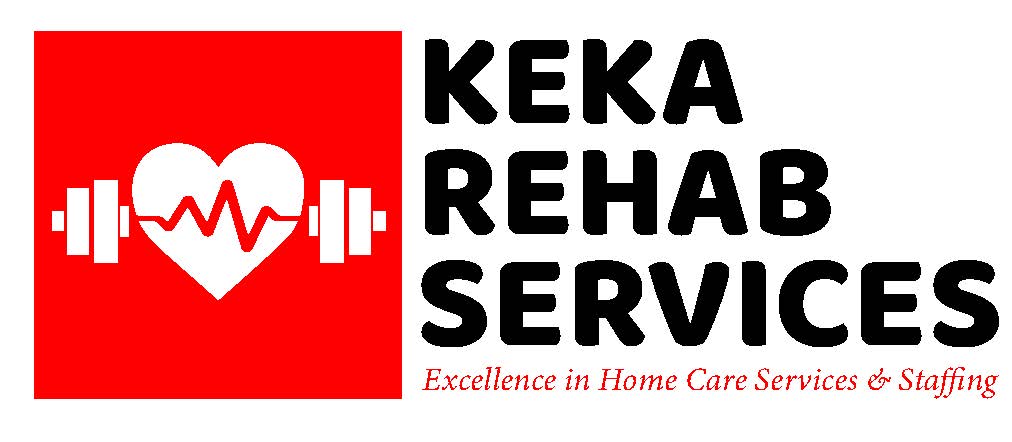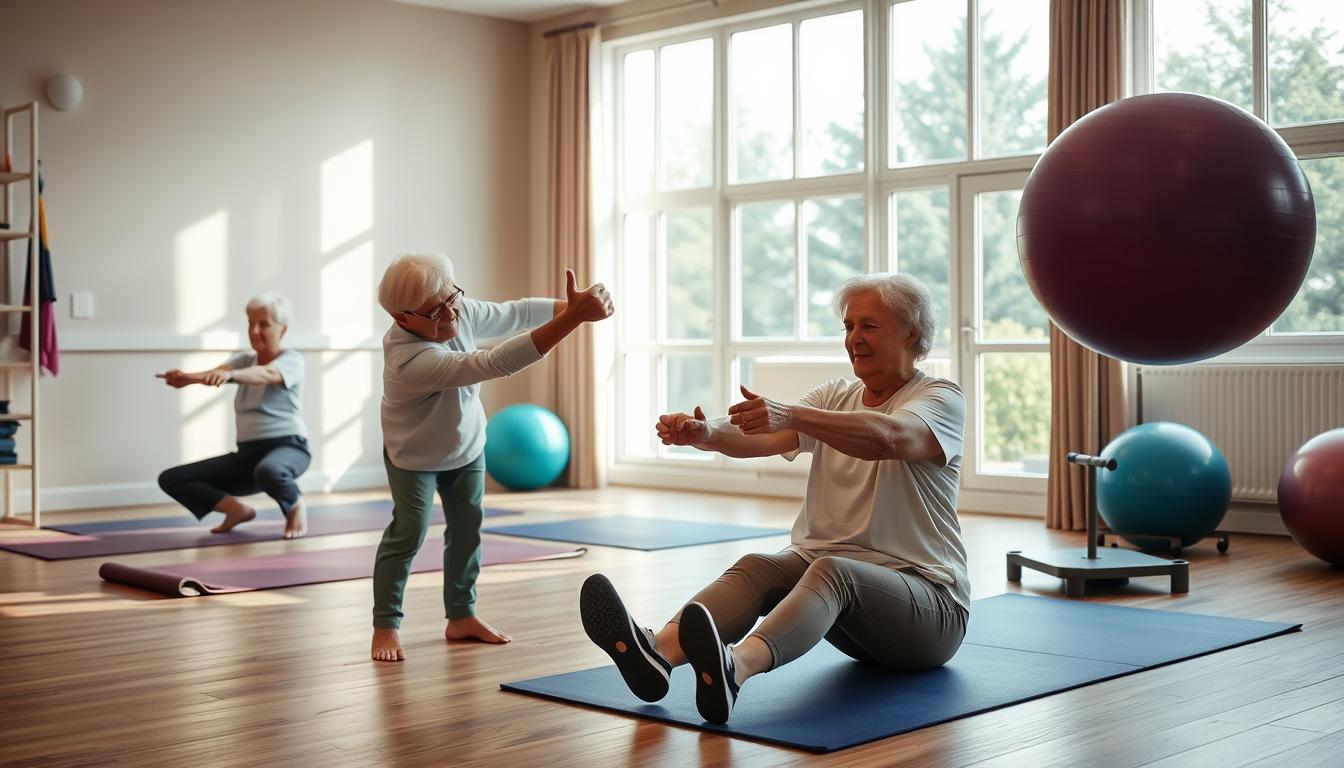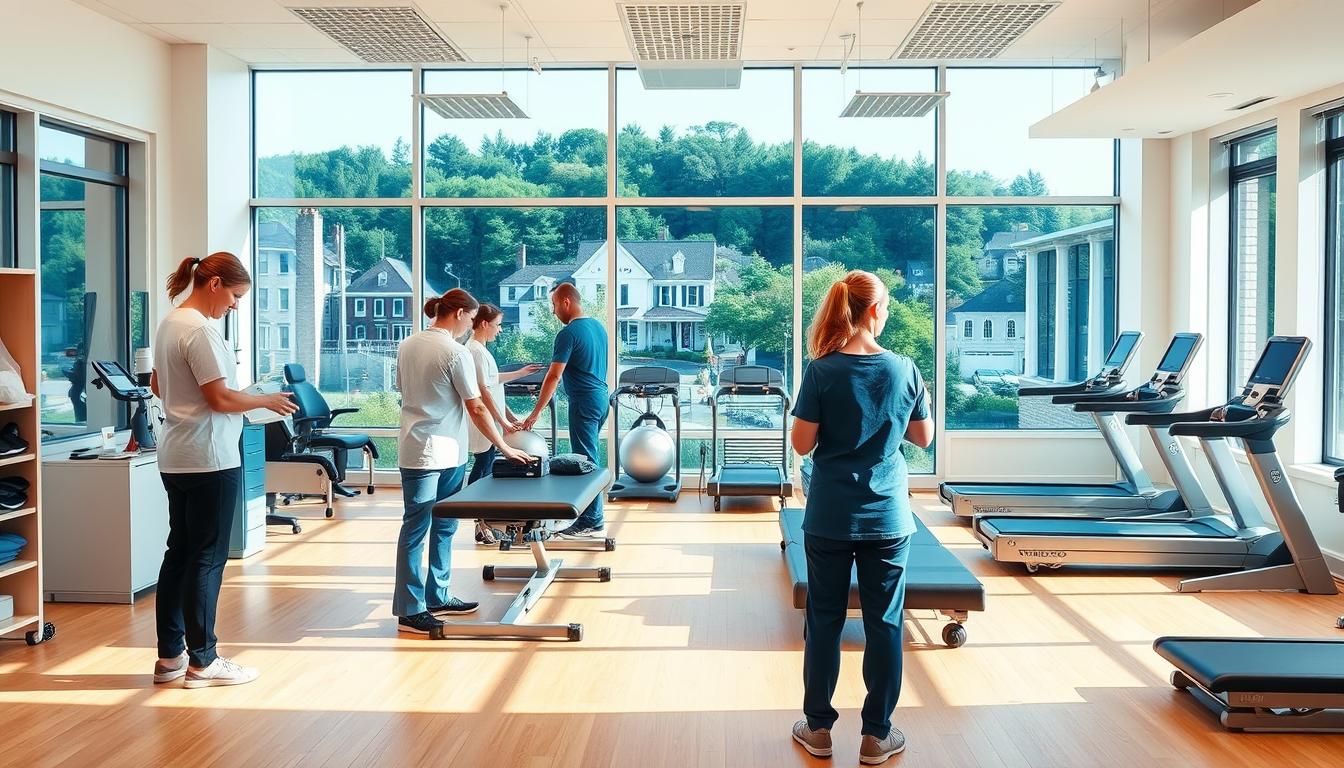Taking care of your body is key as you age. Seniors physical therapy helps you stay independent and improves your quality of life. The U.S. senior population is set to grow to 21.6% by 2040, making specialized health services more necessary.
Geriatric physiotherapy offers custom solutions for older adults. It aims to boost mobility, strength, and balance. These are vital for staying well as you age. Based on your needs, physical therapists suggest two to three sessions a week, lasting 4 to 12 weeks.
Physical therapy can help the elderly with many issues. It can help them recover from injuries, manage pain, and support healing after surgery. It can also help reduce stress and improve mental health3.
Start moving and see how physical therapy can keep you active and happy in your later years. Let’s examine how this care can improve your daily life and health.
Understanding Physical Therapy for Older Adults
Physical therapy is key to keeping seniors fit and independent. As we age, our bodies change, affecting how we move and stay healthy. Let’s examine how physical therapy helps seniors stay active despite these changes.
Natural Age-Related Changes
Our bodies change with age, impacting our physical skills. We lose muscle, our joints lose flexibility, and balance gets harder. This makes seniors more likely to get hurt or have long-term health issues. Physical therapy for seniors aged 65 and up aims to tackle these changes and boost overall health.
Role of Physical Therapy in Senior Health
Physical therapy is vital for seniors. It helps them heal from injuries, manage long-term health issues, and live better lives. It boosts strength, coordination, and balance, lowering the risk of falls, which are a major cause of injury and death in older adults.
Physical therapists create custom exercises and treatments to improve seniors’ mobility, flexibility, and endurance.
Types of Geriatric Physical Therapy
Geriatric physical therapy covers different areas to meet specific needs:
- Orthopaedic therapy: Deals with joint and muscle problems
- Neurological therapy: Manages conditions like Parkinson’s disease and multiple sclerosis
- Cardiopulmonary therapy: Boosts heart and lung health
- Hydrotherapy: Uses water exercises to improve range of motion and muscle strength
These therapies and exercises help seniors stay independent and enhance their quality of life. Physical therapists also teach about lifestyle choices that affect mobility and chronic disease risk.
Seniors Physical Therapy: A Complete Approach
Physical therapy for seniors is more than just exercise. It’s a whole plan for elderly rehabilitation and ageing wellness. Geriatric physiotherapy covers many health areas, like pain control and better movement.
Your therapist will create a plan just for you. They’ll consider your health history, current state, and goals. This will ensure that every session helps you feel better overall7.
Physical therapy can improve your life. It lowers the chance of falls, helps with long-term conditions like arthritis, and cuts down on pain meds use. You’ll learn to stay balanced, get stronger, and do everyday tasks more quickly.
It’s not just about physical health. Regular therapy boosts your confidence and freedom. You’ll learn to move safely and enjoy activities you love.
It’s never too late to start physical therapy. Even at age 80 or older, it can help you get stronger, move better, and feel better overall6. With the right help, you can keep living life your way.
Key Benefits of Physical Therapy for the Elderly
Physical therapy greatly benefits seniors, improving their quality of life. It helps them stay independent and feel better overall.
Improved Mobility and Independence
Senior fitness programs focus on exercises that boost independence. These routines make daily tasks easier. Physical therapy also lowers the risk of falls, which is a big concern for seniors89.
Pain Management and Relief
Physical therapy is great for managing pain in seniors. It helps with arthritis, fibromyalgia, and headaches. Many seniors use it to handle vertigo, carpal tunnel, and pelvic floor issues.
Enhanced Balance and Coordination
Balance training is key for seniors’ safety and confidence. Physical therapy improves coordination, lowering fall risks. It helps those with Parkinson’s or Multiple Sclerosis control tremors and stay stable.
Increased Strength and Flexibility
Strength and flexibility exercises are essential for seniors. They fight muscle loss and joint stiffness, which are common in ageing. Physical therapy is also vital after surgeries, such as hip or knee replacements.
Physical therapy is very helpful for seniors who want to stay healthy and independent. It treats many conditions, from osteoporosis to neurological disorders, improving overall well-being9.
Prevention and Management of Age-Related Conditions
Physical therapy is key for seniors’ health. It helps prevent and manage age-related conditions, improving ageing wellness. Geriatric physical therapy builds strength and endurance in older adults. This helps with daily activities and prevents falls and muscle loss.
As you age, your body changes. Muscle and joint strength decrease, and older adults often become less active. This leads to a decline in coordination and reaction time. Seniors’ physical therapy targets these issues, helping maintain independence.
Elderly rehabilitation through physical therapy addresses various conditions:
- Osteoporosis
- Arthritis
- Parkinson’s disease
- Chronic obstructive pulmonary disease (COPD)
- Side effects of cancer treatments
Physical therapy exercises for seniors include lower body stretches, endurance training, strengthening exercises, and balance activities. These exercises focus on important muscle groups like the quadriceps and glutes. They improve your ability to do daily tasks like standing up from a chair or climbing stairs.
Regular physical activity is essential for health. Older adults over 65 should aim for at least 150 minutes of moderate-intensity weekly activity, like brisk walking or biking. This prevents muscle atrophy and keeps functional strength, endurance, and range of motion.
By adding senior physical therapy to your routine, you’re taking a proactive step towards better aging wellness. It’s not just about managing existing conditions; it’s about preventing future health issues and enjoying a better quality of life.
Physical Therapy for Fall Prevention and Safety
Fall prevention is key in physical therapy for seniors. One in four Americans aged 65 and older falls each year, which shows how important it is to tackle this issue11. Physical therapy helps by improving muscle tone, joint stability, and balance, which are all vital for staying steady and avoiding falls11.
Balance Training Techniques
Balance training is at the heart of preventing falls. Physical therapists create special exercises to boost balance. These exercises also improve flexibility and joint movement, helping seniors move better.
Home Safety Assessment
Physical therapists conduct detailed fall risk checks to determine why seniors might fall11. They also examine the home for dangers and suggest ways to make it safer. They also teach seniors how to use canes or walkers, making daily tasks safer and more confident11.
Risk Reduction Strategies
Physical therapy examines the whole picture of senior health, including physical, mental, and environmental factors11. Therapists create exercise plans that fit each person’s needs and health. These plans include strength and balance exercises, which are essential for preventing falls12.
Adding physical therapy to senior care plans can significantly improve their lives and balance. Regular treatment can lower fall risks, saving money and keeping seniors independent.
Rehabilitation After Surgery or Injury
Physical therapy is key for rehabilitation for elderly people after surgeries or injuries. Geriatric physiotherapy aims to restore function, improve mobility, and manage pain. Physical therapists create custom plans to help seniors reach their recovery goals.
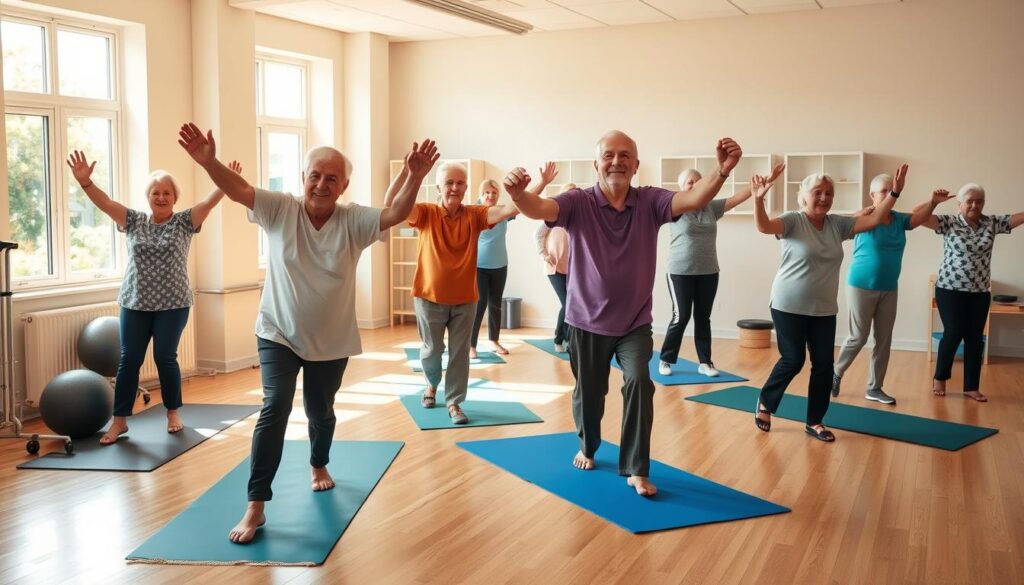
Starting physical therapy early can speed up recovery and prevent complications. This approach improves the quality of life for seniors after surgery. The treatment boosts blood flow to the surgical area, helping with healing and reducing the chance of re-injury.
Geriatric physiotherapy includes exercises to build strength, flexibility, and endurance. These exercises help seniors return to their pre-injury or pre-surgery level of function. Physical therapists also work on:
- Pain management through massage, heat therapy, and ice therapy
- Blood clot prevention exercises
- Restoring the range of motion
- Improving balance and coordination
Physical therapy helps not only physically but also mentally. It reduces stress and promotes relaxation, aiding in the healing process14. Therapists also teach seniors about safe daily activities and injury prevention, ensuring a smoother return to independence14.
Managing Chronic Conditions Through Physical Therapy
Physical therapy is key for seniors with chronic diseases. It offers custom plans to boost health and care for the elderly. Physical therapists can treat many conditions independently in all 50 states15.
Arthritis Management
Physical therapy helps with arthritis. The Tai Chi for Arthritis and Falls Prevention program can stop pain or injury. Physical therapists create special exercises to lessen pain and improve joint movement.
Osteoporosis Care
Physical therapy helps manage osteoporosis by strengthening bones and preventing fractures. It includes weight-bearing exercises and balance training. The CDC suggests adults, including seniors, do 150 minutes of activity weekly, with balance exercises to avoid falls.
Cardiovascular Health
Physical therapy greatly improves heart health in seniors. Research shows exercise therapy lowers death rates in heart disease and heart failure patients. Your physical therapist can create a safe, effective program for your heart.
Regular physical therapy keeps people moving and full of life as they age15. Physical therapists design treatment plans, remove barriers to activity, and offer education and support17. This approach improves quality of life and helps manage chronic conditions.
Customized Exercise Programs for Seniors
Physical therapists make unique exercise plans for older adults. These plans aim to improve strength, flexibility, and mobility. They are designed to meet each person’s needs and abilities.
Low-Impact Exercises
Gentle activities are key in many senior exercise routines. Swimming, walking, and chair-based exercises are great. They help keep joints healthy and improve heart health without strain.
Strength Training Options
Resistance exercises are important for maintaining muscle mass and strength as we age. Leg raises, squats, and other exercises help seniors perform daily tasks safely and maintain their independence
Regular strength training can also increase muscle, strength, and flexibility in older adults.
Flexibility Routines
Stretching exercises are essential for seniors to keep moving well. They lower injury risks and boost mobility. Yoga classes for older adults improve flexibility and offer social benefits.
Customized exercise programs greatly improve seniors’ confidence in exercising. A study found a 30.8% boost in the group with personalized plans compared to 16.7% in the control group. These tailored programs enhance physical health and mental well-being, boosting seniors’ confidence.
The Role of Physical Therapy in Mental Well-being
Physical therapy is key for senior wellness and mental health. It boosts mood and brain function. Active older adults are 50% less likely to have brain problems.
Exercise, given by physical therapists, helps with depression and anxiety. It’s a top choice for treating mild to moderate depression. For seniors, it offers relief and supports active aging.
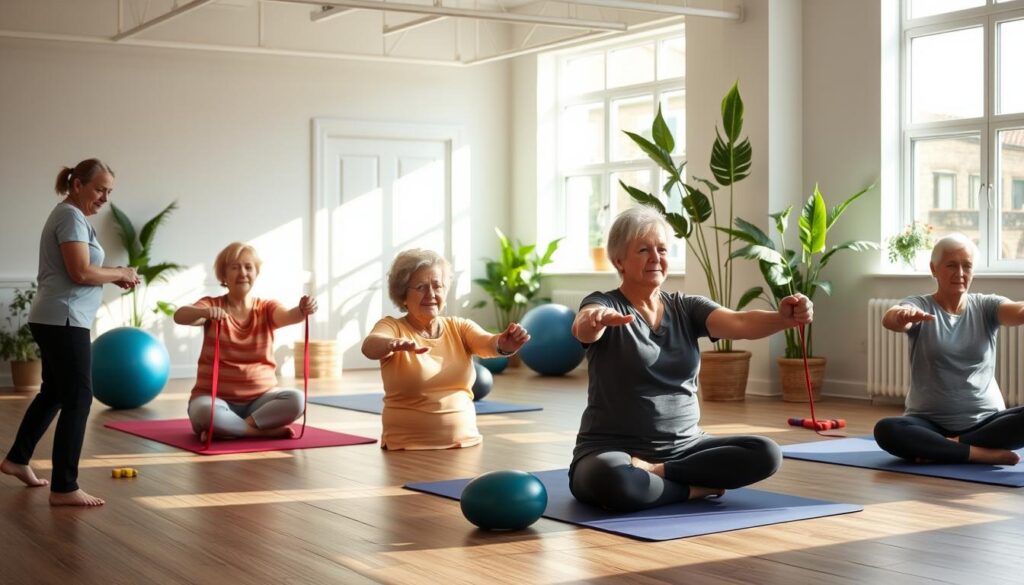
Physical therapy does more than help the mind. Active women have a 34% lower risk of brain decline than less active ones. This shows why staying active is vital as we age.
It also helps with sleep, which is key for mental health. Cognitive Behavioral Therapy for Insomnia (CBT-I) can be part of physical therapy to fix sleep issues.
Adding mindfulness and acceptance to physical therapy boosts mental health. These methods help with chronic pain, stress, depression, and anxiety.
Seeing physical therapy as part of a whole health plan helps seniors. It improves physical function and mental well-being. Regular activity cuts down on mental health days by 40% compared to sitting a lot. This shows how exercise and mental health are linked in active aging.
Working with Healthcare Providers
Effective geriatric care needs teamwork between physical therapists and other healthcare experts. This teamwork makes sure you get the best care for your senior health.
Coordination with Medical Team
Physical therapists team up with doctors, nurses, and specialists for better care. This teamwork helps improve your treatment results. A survey found that 81.6% of healthcare workers think they can help older adults stay active more.
Progress Monitoring
Regular check-ups and assessments are key in geriatric care. Your physical therapist keeps an eye on your progress and changes exercises if needed. This ensures your therapy stays effective and meets your changing needs.
Treatment Plan Adjustments
As your health changes, so does your treatment plan. Your physical therapist might change exercises, add new techniques, or adjust session intensity. This flexibility helps you get the best results from your therapy.
Studies show early physical therapy helps a lot. It reduces pain and improves function in patients with musculoskeletal pain. Working with your healthcare team maximizes your physical therapy benefits and improves your life quality.
Conclusion
Physical therapy is a big help for seniors, tackling issues like arthritis and chronic pain. It helps them stay independent and live better lives. In fact, 65% of seniors move better and 78% feel less pain after therapy.
Seniors get special exercises based on their needs. These include strength training and balance exercises like Tai Chi. These tailored plans help 90% of seniors get stronger and 75% avoid falls.
Physical therapy does more than just improve physical health. It also boosts heart health and sharpens the mind. It helps 82% of seniors get back on their feet after hospital stays and 70% manage chronic conditions better. By choosing physical therapy, you’re choosing a healthier, happier future.
